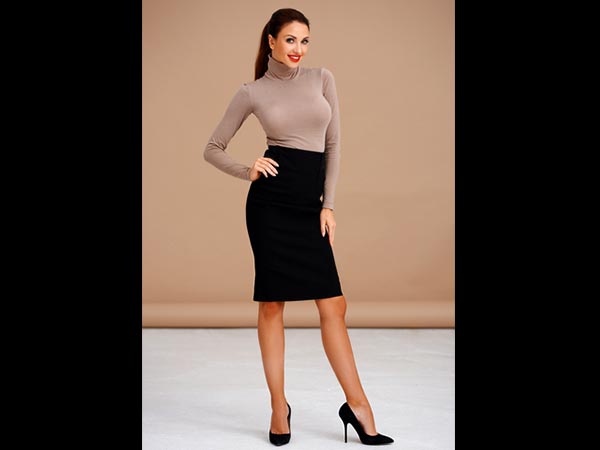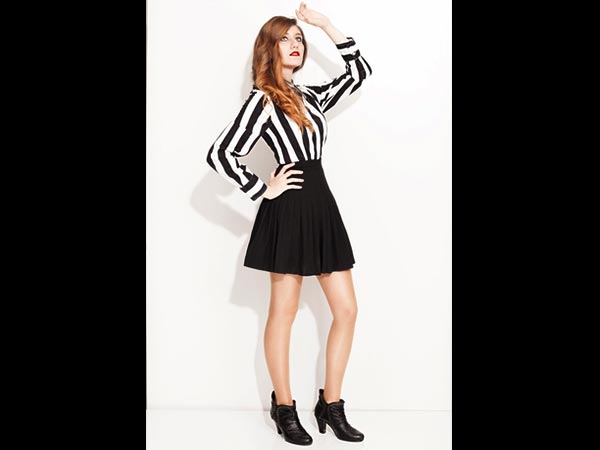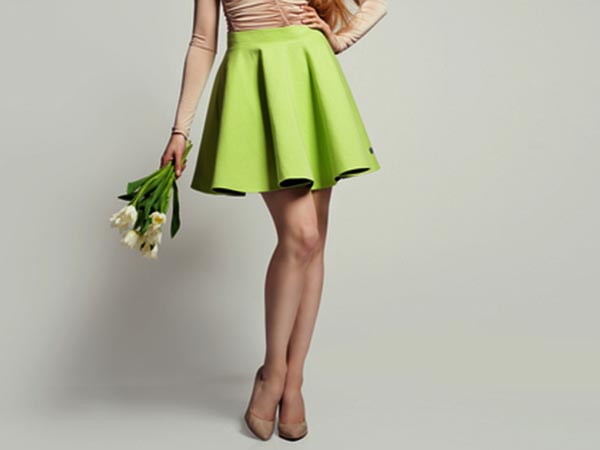Just In
- 12 min ago

- 2 hrs ago

- 10 hrs ago

- 10 hrs ago

Don't Miss
- Movies
 Paarijatha Parvam Full Movie Leaked Online In HD For Free Download Hours After Its Theatrical Release
Paarijatha Parvam Full Movie Leaked Online In HD For Free Download Hours After Its Theatrical Release - Technology
 itel S24 With 108MP AI Dual Camera India Launch Confirmed; Amazon Microsite Goes Live
itel S24 With 108MP AI Dual Camera India Launch Confirmed; Amazon Microsite Goes Live - Finance
 Daily Relative Strength Index RSI In A Bullish Mode of This Pharma Stock; Buy For TP Rs 635-685
Daily Relative Strength Index RSI In A Bullish Mode of This Pharma Stock; Buy For TP Rs 635-685 - News
 Indonesian Volcano Spews Clouds Of Ash, Authorities Evacuate Over 2,100 People
Indonesian Volcano Spews Clouds Of Ash, Authorities Evacuate Over 2,100 People - Sports
 RCB Green Jersey Match: Record And Stats Ahead of KKR Meeting in IPL 2024
RCB Green Jersey Match: Record And Stats Ahead of KKR Meeting in IPL 2024 - Automobiles
 Mahindra XUV 3XO SUV – Everything We Know So Far
Mahindra XUV 3XO SUV – Everything We Know So Far - Education
 Exam Pressure Does Not Exist; Studying Punctually is Crucial; Says Aditi, the PSEB 2024 Topper
Exam Pressure Does Not Exist; Studying Punctually is Crucial; Says Aditi, the PSEB 2024 Topper - Travel
 Journey From Delhi To Ooty: Top Transport Options And Attractions
Journey From Delhi To Ooty: Top Transport Options And Attractions
Fashion Fact: Find Out How French Designer Christian Dior Fathered Both Pencil And A-line Skirts!
Both the pencil skirt and the A-line skirt were designed by the famous Frenchman Christian Dior, who is single-handedly credited with inspiring 1950s fashion.
Lets first talk about the inspiring pencil skirt trend that has taken the world by storm.
By definition, the pencil skirt is a slim-fitting skirt with a straight, narrow cut. Generally the hem falls to, or is just below, the knee and is tailored for a close fit. It is named for its shape: long and slim like a pencil.

The versatile pencil skirt may be worn either as part of a suit or as a separate, individual piece of clothing. The slim, narrow shape of a pencil skirt can restrict the movement of the wearer so pencil skirts often have a slit at the back, or less commonly at the sides. Sometimes a pleat, which exposes less skin, is used instead of a slit, to allow the wearer to move about freely and modestly
Some classic shoes for wearing with a pencil skirt are pumps, or high heels, with sheer stockings or tights. Back-seamed hosiery recalls the classic pencil-skirt era of the 1950s. The pencil skirt brings a feminine sexiness to a woman's outfit without having to show skin.

Pencil skirts can also be worn with flats for a more casual, youthful appearance that echoes the 1960s. Pencil skirts and loafers are classic "Prep."
Narrow-fitting skirts have a long history in western fashion. The parent to the pencil skirt is the hobble skirt, a pre-WWI fad inspired by the Ballets Russes. This full-length skirt with a narrow hem restricted walking about freely.
It was in his 1954 Autumn Winter collection did the the French designer Christian Dior introduce the classic modern pencil skirt.

The pencil skirt quickly became very popular, especially for office wear. This success was due to women's desire for new fashions in the wake of Second World War and Cold War rationing, coupled with the austere economic climate, when fabrics were expensive.

The pencil skirt feels different from looser skirts, and impacts the wearer's movements and posture. Walking needs to be done in shorter strides; and entering and leaving a car gracefully takes much practice. When sitting, the legs need to be close together. Activities such as climbing ladders and riding bicycles can be very difficult in a pencil skirt, making a woman more 'lady-like' in some vague sense. The pencil skirt is warmer due to the reduced ventilation, and is less likely to be blown up by gusts of wind.
A vent or kick pleat in the center back seam of the skirt makes it easier to walk with a normal stride, while preserving the slim line.
Coming to the stylish A-line skirt.
An A-line skirt is a skirt that is fitted at the hips and waist and gradually flares out towards the hem, giving the impression of the shape of a capital letter A. The term is also used to describe dresses and coats with a similar silhouette.

The term was first used by the same French couture designer Christian Dior who fathered the pencil skirt, as the label for his collection of spring 1955. The A-Line collection's feature item, the "most wanted silhouette in Paris" back then, was a "fingertip-length flared jacket worn over a dress with a very full, pleated skirt".

Although an A-shape, this silhouette was not identical to what is now understood to embody the A-line idea. That idea was given its definitive expression and popularized by Dior's successor, Yves Saint Laurent, with his "Trapeze Line" of spring 1958, which featured dresses flaring out dramatically from a fitted shoulder line.

A-line clothes remained popular in the 1960s and 70s, disappeared from fashion almost completely by the early 1980s and were revived by the retro trend of the late 1990s. By that time, "A-line" was used more loosely to describe any dress wider at the hips than at the bust or waist, as well as a number of flared skirt styles. "True" A-line shapes on the pattern of Dior and Saint Laurent saw a revival in the early 2000s.
Did you find this post informative? Find more Fashion Facts to make your day!
-
 fashionFashion Designer Yves Saint Laurent Birthday Special: Purveyor of Timeless Style
fashionFashion Designer Yves Saint Laurent Birthday Special: Purveyor of Timeless Style -
 insyncGrace Kelly's Clothes To Be Displayed
insyncGrace Kelly's Clothes To Be Displayed -
 trends n styleMadame A Paris: Embodiment Of Sophistication
trends n styleMadame A Paris: Embodiment Of Sophistication -
 fashionAt Paris Fashion Week Is All About ‘Understated’ Style, Pics!
fashionAt Paris Fashion Week Is All About ‘Understated’ Style, Pics! -
 fashion trendsOscars 2023: Michelle Yeoh Looks Stunning In White Dior Ensemble, Pics!
fashion trendsOscars 2023: Michelle Yeoh Looks Stunning In White Dior Ensemble, Pics! -
 women fashionParis Fashion Week 2023: Dior Brings Back Vintage Style On Runway
women fashionParis Fashion Week 2023: Dior Brings Back Vintage Style On Runway -
 bollywood wardrobeHappy Birthday Sonam Kapoor: 4 Stylish Skirt Sets From Fashionista’s Instagram For Different Occasions
bollywood wardrobeHappy Birthday Sonam Kapoor: 4 Stylish Skirt Sets From Fashionista’s Instagram For Different Occasions -
 bollywood wardrobeBhumi Pednekar Looks Office-Ready As She Exudes Boss Lady Vibes In Her Formal Black Suit And Classy Handbag
bollywood wardrobeBhumi Pednekar Looks Office-Ready As She Exudes Boss Lady Vibes In Her Formal Black Suit And Classy Handbag -
 fashion trendsChristmas 2020: If Your Special Lady Is Princess Diana’s Admirer, You’ve Got To Buy Her This Bag
fashion trendsChristmas 2020: If Your Special Lady Is Princess Diana’s Admirer, You’ve Got To Buy Her This Bag -
 fashion trendsMaisie Williams Aka Arya Stark’s Latest Sassy Look Plus Two More Edgy Outfits Of Hers Decoded
fashion trendsMaisie Williams Aka Arya Stark’s Latest Sassy Look Plus Two More Edgy Outfits Of Hers Decoded -
 bollywood wardrobeAlia Bhatt’s Fun And Stylish Photos Are Taken By Her Sister Shaheen Bhatt
bollywood wardrobeAlia Bhatt’s Fun And Stylish Photos Are Taken By Her Sister Shaheen Bhatt -
 bollywood wardrobeHappy Birthday Sobhita Dhulipala: Five Times The Diva Left Us Stunned With Her Unconventional Style
bollywood wardrobeHappy Birthday Sobhita Dhulipala: Five Times The Diva Left Us Stunned With Her Unconventional Style


 Click it and Unblock the Notifications
Click it and Unblock the Notifications



